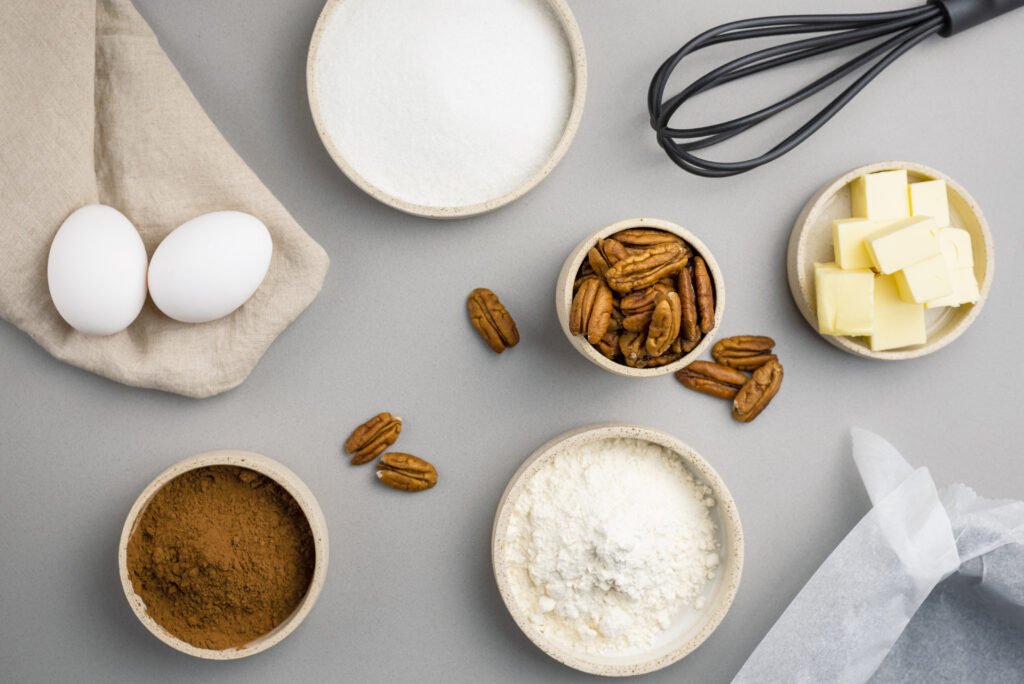The Ultimate Almond Nut Cake Recipe: A Delightful Treat for Every Occasion
When it comes to versatile, delicious desserts, the Almond Nut Cake stands out as a timeless classic. This cake is not only rich in flavor but also packed with the goodness of almonds, making it a healthier alternative to other cakes. Whether you’re a seasoned baker or a novice in the kitchen, this recipe will guide you through creating an almond nut cake that’s perfect for any occasion.
Introduction to Almond Nut Cake
Almond nut cake is a favorite for many, not just because of its rich, nutty flavor but also for its versatility. It’s a cake that can be dressed up for special occasions or kept simple for an everyday treat. The base of the cake is made primarily with almond flour or ground almonds, which gives it a unique texture and flavor profile that’s different from traditional flour-based cakes.
Almonds are not only delicious but also packed with nutrients. They are a great source of healthy fats, fiber, protein, magnesium, and vitamin E. Incorporating almonds into your diet can help regulate blood sugar levels, lower cholesterol, and promote heart health. This cake is a great way to enjoy the benefits of almonds in a sweet, indulgent form.
Ingredients for Almond Nut Cake

The ingredients for almond nut cake are simple and straightforward, making it easy to whip up this delightful dessert even at the last minute. Here’s what you’ll need:
- Almond Flour or Ground Almonds (2 cups): The star ingredient of this cake. Almond flour gives the cake its moist, dense texture and nutty flavor. If you prefer a coarser texture, you can grind whole almonds yourself.
- All-Purpose Flour (1/2 cup): Helps to provide structure to the cake. If you prefer a gluten-free option, you can substitute with a gluten-free flour blend.
- Sugar (1 cup): Granulated sugar is traditionally used, but you can also use coconut sugar or a sugar substitute if you prefer a lower-glycemic option.
- Butter (1/2 cup, softened): Adds richness and moisture to the cake. For a dairy-free option, substitute with coconut oil or a vegan butter alternative.
- Eggs (4 large): Eggs are crucial for binding the ingredients together and providing lift to the cake.
- Baking Powder (1 teaspoon): Helps the cake rise, ensuring it is light and fluffy despite the density of the almond flour.
- Vanilla Extract (1 teaspoon): Adds a warm, sweet aroma and enhances the overall flavor of the cake.
- Milk (1/4 cup): Helps to moisten the batter. You can use any milk of your choice—dairy, almond, soy, or oat milk.
- Salt (1/4 teaspoon): Balances the sweetness and enhances the flavors.
- Slivered Almonds (1/2 cup): For garnish and added texture, giving the cake a delightful crunch.
- Powdered Sugar (optional, for dusting): A light dusting of powdered sugar adds a touch of sweetness and makes the cake look beautiful when served.
Step-by-Step Instructions
Step 1: Preparing the Almond Flour
If you’re using whole almonds to make your own almond flour, start by blanching the almonds to remove the skins. This can be done by boiling the almonds in water for a minute, then draining and slipping off the skins. Once peeled, allow the almonds to dry completely before grinding them into a fine powder using a food processor. Be careful not to over-process, as this can turn the almonds into almond butter.
Step 2: Mixing the Dry Ingredients
In a medium-sized bowl, combine the almond flour, all-purpose flour, baking powder, and salt. Whisk the ingredients together to ensure they are evenly distributed. This step is crucial for achieving a uniform texture in the cake, as it helps prevent clumps of flour or baking powder from forming.
Step 3: Creaming the Butter and Sugar
In a large mixing bowl, cream together the softened butter and sugar until the mixture is light and fluffy. This can be done using a hand mixer or a stand mixer with a paddle attachment. The creaming process incorporates air into the batter, which helps the cake to rise and become light in texture.
Step 4: Adding the Eggs
Add the eggs to the butter and sugar mixture one at a time, beating well after each addition. This ensures that the eggs are fully incorporated into the batter, creating a smooth and homogeneous mixture. The eggs also help to emulsify the batter, contributing to the cake’s tender crumb.
Step 5: Incorporating the Dry Ingredients
Gradually add the dry ingredients to the wet mixture, alternating with the milk. Begin and end with the dry ingredients, mixing just until combined after each addition. Overmixing can lead to a dense cake, so it’s important to mix only until the ingredients are fully incorporated.
Step 6: Adding the Vanilla Extract
Stir in the vanilla extract to add a final touch of flavor to the batter. Vanilla complements the nutty flavor of the almonds beautifully and enhances the overall taste of the cake.
Step 7: Preparing the Cake Pan
Grease and flour a 9-inch round cake pan, or line it with parchment paper. Pour the batter into the prepared pan, smoothing the top with a spatula to ensure an even surface. If desired, sprinkle slivered almonds over the top of the batter for added texture and visual appeal.
Step 8: Baking the Cake
Preheat your oven to 350°F (175°C) and bake the cake for 35-40 minutes, or until a toothpick inserted into the center comes out clean. The cake should be golden brown on top and slightly springy to the touch. Allow the cake to cool in the pan for 10 minutes before transferring it to a wire rack to cool completely.
Step 9: Serving the Cake
Once the cake has cooled, you can dust it with powdered sugar for a simple yet elegant finish. Serve the almond nut cake on its own, or with a dollop of whipped cream or a scoop of vanilla ice cream for an extra indulgent treat.
Tips and Tricks for the Perfect Almond Nut Cake
- Use Fresh Almonds: The freshness of your almonds can greatly affect the flavor of the cake. If possible, use fresh, high-quality almonds to ensure a rich, nutty taste.
- Don’t Overmix the Batter: When combining the wet and dry ingredients, mix just until everything is combined. Overmixing can lead to a dense, tough cake.
- Check for Doneness Early: Ovens can vary in temperature, so start checking your cake for doneness a few minutes before the suggested baking time. You want the cake to be golden brown and a toothpick inserted into the center to come out clean.
- Customize Your Cake: This recipe is highly versatile. You can add chocolate chips, dried fruit, or a swirl of almond butter to the batter for extra flavor. You can also experiment with different extracts, such as almond or lemon, for a unique twist.
- Storing the Cake: Almond nut cake can be stored at room temperature for up to 3 days in an airtight container. For longer storage, wrap the cake in plastic wrap and store it in the refrigerator for up to a week. The cake can also be frozen for up to 3 months; just be sure to wrap it well in plastic wrap and aluminum foil before freezing.
Pairing Your Almond Nut Cake
The almond nut cake pairs beautifully with a variety of beverages and accompaniments. Here are a few suggestions:
- Coffee or Espresso: The nutty flavor of the cake is perfectly complemented by a strong cup of coffee or espresso. The bitterness of the coffee balances the sweetness of the cake, making for a delightful pairing.
- Tea: A cup of black tea, such as Earl Grey or Darjeeling, also pairs wonderfully with almond nut cake. The tea’s tannins enhance the nuttiness of the almonds, while the slight bitterness cuts through the cake’s richness.
- Dessert Wine: For a more indulgent pairing, try serving the cake with a sweet dessert wine like Sauternes or Moscato. The sweetness of the wine complements the cake, while the acidity helps to balance its richness.
- Fresh Berries: A side of fresh berries, such as raspberries or strawberries, adds a pop of color and a burst of tartness that contrasts beautifully with the sweet, nutty flavor of the cake.
- Whipped Cream or Mascarpone: A dollop of lightly sweetened whipped cream or a spoonful of mascarpone cheese can elevate the cake to new heights. The creaminess of these toppings complements the dense, moist texture of the cake.
Variations of Almond Nut Cake Around the World
Almond nut cake is beloved in many cultures, and there are countless variations of this delightful dessert. Here are a few international takes on almond cake:
- French Almond Cake (Gâteau aux Amandes): This classic French cake is often made with almond meal and flavored with a hint of rum or almond extract. It’s typically served with a dusting of powdered sugar or a glaze made from apricot preserves.
- Spanish Tarta de Santiago: Originating from Galicia, this traditional Spanish almond cake is made with ground almonds, sugar, and eggs, and flavored with lemon zest and cinnamon. It’s often topped with powdered sugar, with the Cross of Saint James stenciled on top.
- Italian Torta di Mandorle: An Italian almond cake that’s often flavored with lemon or orange zest and sometimes includes a splash of Amaretto. It’s typically served plain or with a dusting of powdered sugar.
- Greek Amygdalopita: This Greek almond cake is made with ground almonds, semolina, and flavored with citrus and cinnamon. It’s usually soaked in a syrup made from honey and lemon, making it a moist and decadent dessert.
- Moroccan Almond Cake: In Morocco, almond cake is often made with ground almonds and semolina, and flavored with orange blossom water and cinnamon. It’s a popular dessert during Ramadan and other special occasions.
Health Benefits of Almonds
Almonds are not only delicious but also offer numerous health benefits, making this cake a more nutritious option compared to other desserts. Here are some of the health benefits of almonds:
- Rich in Nutrients: Almonds are packed with vitamins and minerals, including vitamin E, magnesium, and riboflavin. They are also a good source of protein and healthy fats.
- Heart Health: The monounsaturated fats in almonds can help reduce bad cholesterol levels, which in turn lowers the risk of heart disease.
- Blood Sugar Control: Almonds have a low glycemic index, making them a good choice for people with diabetes. They can help regulate blood sugar levels when consumed as part of a balanced diet.
- Weight Management: Despite being high in calories, almonds can be part of a weight loss diet. They are high in fiber and protein, which can help you feel full and satisfied, reducing overall calorie intake.
- Bone Health: Almonds are a good source of calcium, which is essential for maintaining strong bones and teeth.
A Brief History of Almonds in Baking
Almonds have been a popular ingredient in baking for centuries. The almond tree is native to the Middle East, and almonds have been cultivated and consumed since ancient times. They were highly valued by ancient Egyptians, who used them in bread and desserts. Almonds were later introduced to Europe, where they became a staple ingredient in many traditional pastries and cakes.
In the Middle Ages, almonds were used to make marzipan, a sweet almond paste that was popular in European courts. Almond flour became a common ingredient in many desserts, including macaroons, tarts, and cakes. Today, almonds are used in a wide variety of baked goods around the world, from French frangipane tarts to Italian biscotti.
Conclusion
The almond nut cake is a dessert that truly stands the test of time. Its rich, nutty flavor and moist, dense texture make it a favorite for many, while its simplicity and versatility make it a go-to recipe for any occasion. Whether you’re serving it at a special celebration or enjoying it as an everyday treat, this cake is sure to impress.


